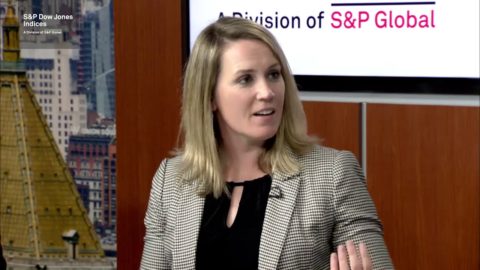COVID-19: What’s Next?
Moving Forward With a Plan and a Process
“First was the sprint, now we’re in the marathon.”
By: Steven Higgins, Financial Advisor, Principal

The last few months have certainly served as a reminder that volatility can be a violent force. The S&P 500 went from an all-time high on February 19, 2020 to down 34% by March 23. Since then, the widely watched index has recovered much of the losses, hovering down around 15% from the highs. So what’s next? Can we be confident that we’ve seen the lows of this pandemic driven market turmoil? Of course, we don’t know. What we do know is that it took an unprecedented amount of panic to fuel the fastest drop in history and that panic, to a large degree, has subsided. That being said, in the past two decades we’ve seen the S&P 500 drop by over 50% two times. So, the 34% drop culminating in March isn’t anywhere close to as bad as what the markets are capable of. With the S&P 500 now down just 15% from its highs and the tech-heavy NASDAQ miraculously almost even for the year, it’s fair to wonder whether the markets are too optimistic about our economy’s ability to launch itself out of its forced slumber.
My HDWS partner and fellow financial advisor, Allie Schmidt, and I have had countless conversations between ourselves and with our clients about the emotional toll this epidemic has had on people and the risks associated with abandoning a plan during volatility. The truth is, most investors and advisors don’t have a plan or process for volatility even though it’s extremely common. Volatility frequently leads to the biggest mistake an investor can make: selling low. At HD Wealth Strategies, everything is a process. Our portfolios are built alongside our client’s financial plan and in coordination with a Personal Investment Policy. We talk at length about volatility and emotions during the planning process. A stroll through the past years of our blog postings will reveal our consistent drum-beating of “be prepared for volatility.” So, when the market raced lower in March, our process as planned went to work; systematically repositioning portfolios, buying stocks, conducting tax loss harvesting, and doing ROTH conversions when appropriate. (For more details on our process amidst the chaos, check out our video from March 24, 2020: “Tactical Financial Planning & Tax Management) The human part of the process went to work as well. We talked with clients and hosted countless virtual meetings. We presented virtual town hall meetings and distributed our commentary and videos to make sure we were reinforcing our plan and process with our clients. Bring on what’s next!
You can separate market calamities into basically two categories: black swan events and systemic events. Black swan events are “bad surprises” and to be certain, this was the mother of surprises; essentially redefining what a black swan event is. The Great Recession and associated market crash of 55% resulted from systemic problems and the issues that caused the problems were rampant throughout our economy. History tells us that black swan events are more violent but have significantly faster recoveries because the economic fundamentals are still intact. The economy was essentially as strong as it’s ever been in early February and that bodes well for a hastier recovery. However, this is not your everyday “bad surprise.” There will be lingering effects for quite some time. The economic projections aren’t good, and while the stock market has partially recovered astoundingly fast, it could be a while before we see new record highs. Brian Wesbury, Chief Economist of First Trust Portfolios anticipates a full recovery by mid to late 2021. However, between now and then, he anticipates the economic aftermath of the COVID-19 shut down to provide many challenges for short-term returns.
At HD Wealth Strategies, we see this as the beginning of stage two in the volatility event. The first stage was a flurry and there was much panic driven excitement. Stage two will be different. It may be a grueling slog through the mud. Wesbury’s prediction of new market highs in possibly one year provides some hope, but between now and then, we’ve got to count the cost of this and that means waking up to some economic data the likes of which we’ve never seen. The GDP numbers and the employment data are going to look downright horrendous. However, the market already expects bad numbers. The question is, can investors and those preparing for or living in retirement weather the ever-present carnage which will be on full display every day? And, do I need to remind you that we are actually in a presidential election year? 2020 is going to test investors in every way. We believe it is absolutely critical to have a process and follow it. The chaos in March reinforced the power of our process and now we have to settle in for the long haul. There will be more storms, setbacks, and aftershocks, but we expect that. First was the sprint and now we’re in the marathon. As we set out on this journey back, here’s a nugget to give you courage: While ending his sobering remarks at the Berkshire Hathaway annual investors meeting (virtually) this past week, Warren Buffet said, “But in the long run, nothing can basically stop America.” I can get behind that, let’s go.
*Financial data provided by Y Charts.
The opinions voiced in this material are for general information only and are not intended to provide specific advice or recommendations for any individual. All performance referenced is historical and is no guarantee of future results. All indices are unmanaged and may not be invested into directly. The economic forecasts set forth in this material may not develop as predicted and there can be no guarantee that strategies promoted will be successful.






